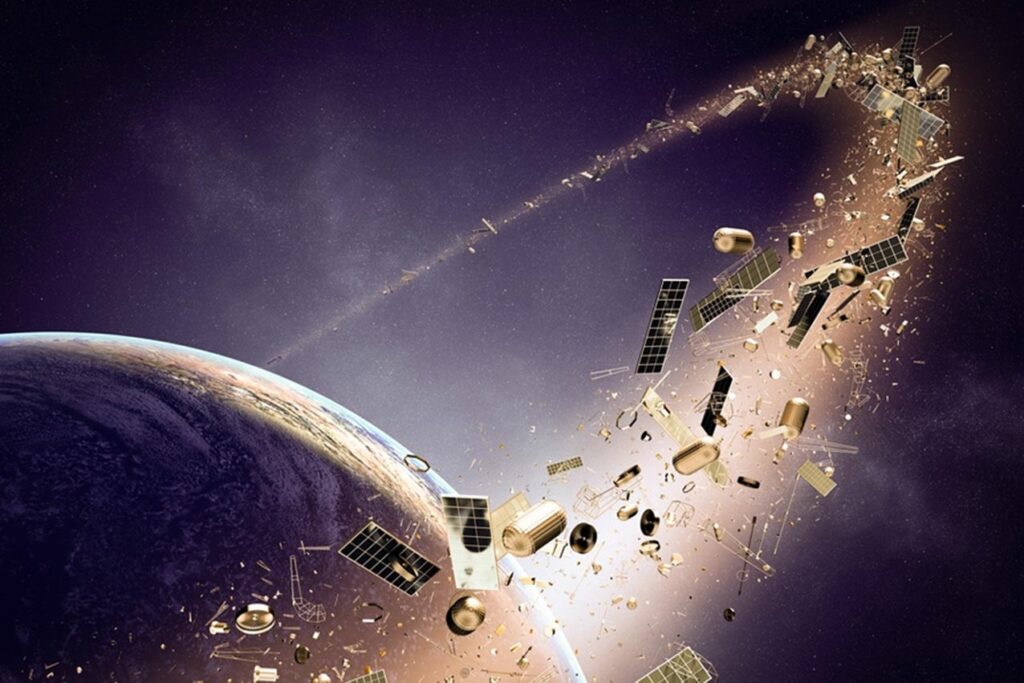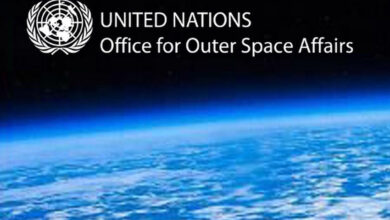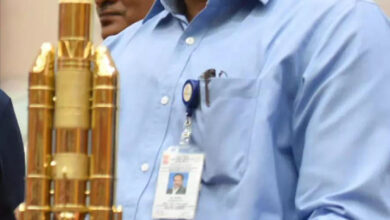Space junk orbiting Earth pose threats to space assets
- Space junk orbiting around the Globe is a serious threat which requires attention from all-over
- Close to 14,000 “trackable” fragmented space debris are orbiting Earth right now
Bangalore, March 16. Space junk orbiting around the Globe is a serious threat which requires attention from all-over.

The rising population of space debris increases the potential danger to all space vehicles.
Space debris encompasses both natural meteoroid and artificial (human-made) orbital debris. Meteoroids are in orbit about the sun, while most artificial debris is in orbit above the Earth (hence the term “orbital” debris).
Orbital debris is any human-made object in orbit about the Earth that no longer serves a useful function. Such debris includes non-functional spacecraft, abandoned launch vehicle stages, mission-related debris, and fragmentation debris.
Orbital debris is not just India’s problem. All the countries and several private companies which have invested billions of dollars in space assets need innovative solutions to tackle the issue.
The surging number of rocket launches and the increasing number of payloads carried in recent years have made the space junk problem acute, especially after private companies such as SpaceX launched thousands of satellites to provide Internet access. In 2022, over 2,160 objects were launched into space, about 300 more than 2021 and 900 more than 2020.
Due to such a rapid increase, the number of rocket bodies and fragmented debris in space has also increased over time. The number of satellites in space crossed the 10,000-mark in 2023. This includes active satellites as well as defunct ones which are still orbiting Earth. The number of fragmentation debris is hurtling towards the 14,000-mark.
While satellite launches are the reason for the rise in rocket bodies orbiting Earth, fragmented debris are mostly a consequence of collisions and Anti-Satellite (ASAT) missile tests. The fragmented junk poses a bigger challenge as tracking debris smaller than 10 centimetres is tough.
The 13,953 debris that are orbiting Earth and the many major countries are responsible for them. Close to 35% originated from the Russia, 31% from the US, and 29% from China. India’s contribution is 0.5%.
Over 2,700 pieces of debris from a Chinese anti-satellite test in 2007, marked as the single worst contamination of space in history, are still in orbit.
While debris has the potential to cause serious accidents, the cost of manoeuvres to avoid collisions is high. In 2022, ISS had to conduct two such collision avoidance manoeuvres due to threats posted by debris from Russia’s ASAT test in 2021. Such manoeuvres are costly as they require hours of monitoring, fuel for movement, and also result in loss of data as instruments are turned off during such operations.
India conducted 21 such corrections for its satellites in 2022, the highest ever for the country. Also, in 2021, ISRO monitored 4,382 events in LEO and 3,148 events in geostationary orbit (GEO) in which debris or other space objects came close to India’s space assets.
As a commitment to reduce space debris the Indian Space Research Organisation (ISRO) on March 7, 2023, successfully carried out a controlled re-entry for the decommissioned Megha-Tropiques-1 (MT1). The satellite, launched more than a decade ago, was designed to study clouds in the tropical regions of the world. It was expected to make a final impact in the Pacific Ocean.
ISRO said the satellite was brought down as a part of its commitment to reduce space debris, especially in the much-crowded Low Earth Orbit (LEO). This month, the U.S. Space Command released eight “tenets of responsible behaviour in space.” One of the tenets was to dispose of satellites which have reached their end-of-life, to limit space debris. The planned crash of MT1 is a case in point.





